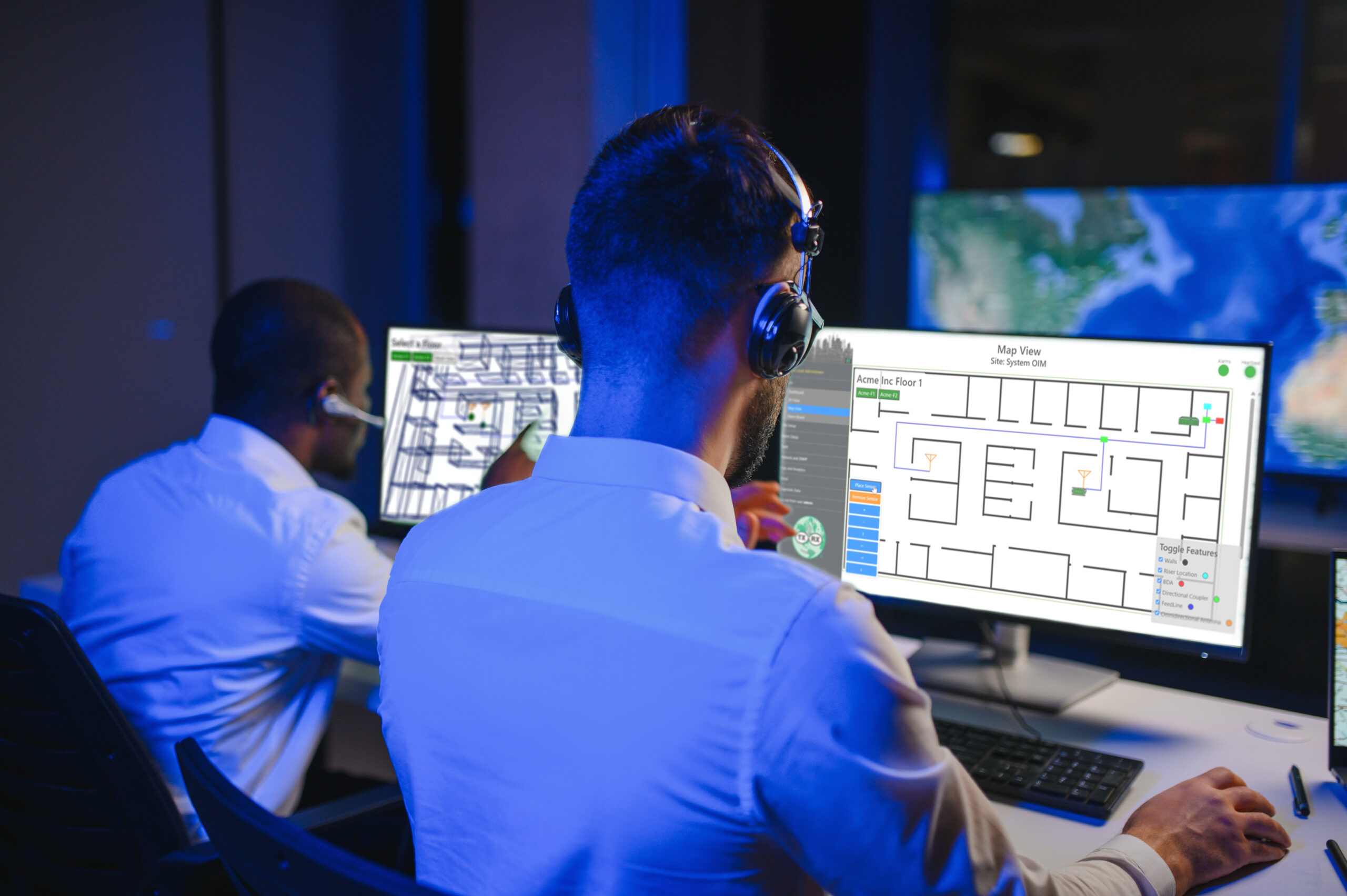How BDAs, DAS, and Portable Towers Enable First Responders
First responders don’t operate in perfect conditions when they’re working in stairwells, in basements, in buildings still under construction, or partially collapsing. They navigate dense forests, flooded highways, and crowded stadiums. Through all of it, they’re expected to stay in constant contact. To receive the call, no matter what stands between them and the nearest antenna.
This signal reliability isn’t just about their radios though, it’s about what exists between the device and the rest of the system. That’s where coverage breaks down. And that’s where bi-directional amplifiers (BDAs), distributed antenna systems (DAS), and portable towers that support land mobile radio (LMR) communications come in. These systems help patch holes in networks and extend coverage into the blind spots. They also make sure radio signals move where structures, terrain, or distance would otherwise shut them down.
For public safety teams in the field, this isn’t a luxury. It’s what makes real-time communication possible when conditions are at their worst.
Bi-Directional Amplifiers: Rebuilding the Signal Path from the Inside
A BDA reinforces degraded inbound transmissions, and cleans and strengthens the signal, pushing it to the network inside the structure. They also work in reverse, capturing weak outbound transmissions from radios and driving them back to the external network.
What matters isn’t just that they boost the signal but that they are able to do it across both transmission paths without introducing distortion, overload, or delay. Installed properly, a BDA works quietly with no complex interface or configuration needed on the radio itself. The signal path simply exists again, where it would otherwise fall off.
Building codes state that structures that fail RF grid tests must be fitted with amplification systems. NFPA 1225 and IFC Section 510 both define the conditions for compliance. When raw signal strength isn’t enough, BDAs become mandatory in order for the structure to get cleared for occupancy.
Distributed Antenna Systems: Delivering Coverage Room by Room
A public safety DAS is a network of strategically located antennas, typically mounted in hallways, mechanical spaces, stairwells, and other areas where signals are known to be weak or non-existent. Connected by coax or fiber, these antennas carry radio frequency energy across an entire structure without relying on natural propagation.
Unlike cellular DAS, which targets user-dense zones, public safety DAS must reach where responders are most likely to work, often alone and with limited visibility. That includes the areas architects often leave until last in planning: elevator shafts, equipment closets, and emergency stairwells.
Coverage requirements aren’t flexible for DAS either. Systems must deliver 99% radio coverage in critical areas (i.e., stairwells, pump rooms, fire command centers) and at least 90% across the rest of the floor space. Antennas must hold up under environmental stress like wind and rain. Cables need to be shielded against both fire and water intrusion. Battery backup isn’t optional, and system faults must trigger alarms automatically. These aren’t value-adds or design preferences. They’re mandatory protections, written into code and enforced because lives depend on them.
Land Mobile Radios: Field-Deployable Coverage When Fixed Assets Fail
Coverage inside buildings is just one side of the equation. There’s often no signal to reinforce in the field and dealing with wildfires, floods, and rural search operations. That’s where portable towers come in. These structures, often telescoping masts mounted to vehicles, trailers, or freestanding tripods, serve one purpose: to gain elevation fast and establish line-of-sight communication.
Unlike permanent towers, portables don’t need foundation prep or anchoring to a structure. Whether supporting a donor antenna feeding a BDA or serving as a direct broadcast point, they extend the network edge wherever the mission requires.
In post-disaster zones, this is often the first infrastructure to go live. Before power and before cellular restoration, the radio signals are re-established. Portable towers are lightweight, self-contained, and scalable. They’re also a cost-effective solution for jurisdictions that need seasonal or event-specific coverage without investing in fixed towers that may only be needed for part of the year.
ERCES Systems: Unified Infrastructure, Not Patchwork Fixes
All of these components matter, but the true magic is in how they work together. A compliant Emergency Responder Communication Enhancement System (ERCES) consists of a donor antenna, BDA, DAS, power backup, and active monitoring. Each part supports the other with donor antennas linked to base station infrastructure, BDAs manage amplification and signal conditioning, and DAS routes coverage across every square foot of the facility. Then the system’s health is reported in real time through status monitoring, fault alarms, and battery state-of-charge indicators.
This architecture isn’t plug-and-play. Each system must be tailored to the building’s layout, material density, and occupancy type: gain levels have to be adjusted to prevent overdrive and cable loss must be accounted for during design. Filters and uplink balancing may be required to prevent harmful interference with neighboring sites or internal equipment.
Authorities review these systems twice, first during the design phase, then again after installation and full-site testing. If the system fails the coverage grid, the building doesn’t open. There’s no certificate of occupancy, no use permits, no workaround. The system isn’t judged on theoretical performance. It has to function as designed, under real-world conditions, with no margin for error.
The System Behind the Signal
For the responder on the ground, a working radio is the link between mission and outcome, BDAs fill the coverage gaps inside structures, and DAS provide reliable signals to the places that typically fail first. Portable towers extend that same coverage into the field, bringing network performance where infrastructure doesn’t exist. These systems don’t just support first responder communications. They make them possible.
At TX RX, we build infrastructure that doesn’t flinch under pressure. Field-tested, code-compliant, and engineered for clarity when it counts, our systems are trusted across the country to deliver communication that holds. Contact us today to speak with one of our engineers who can guide you through our products!

